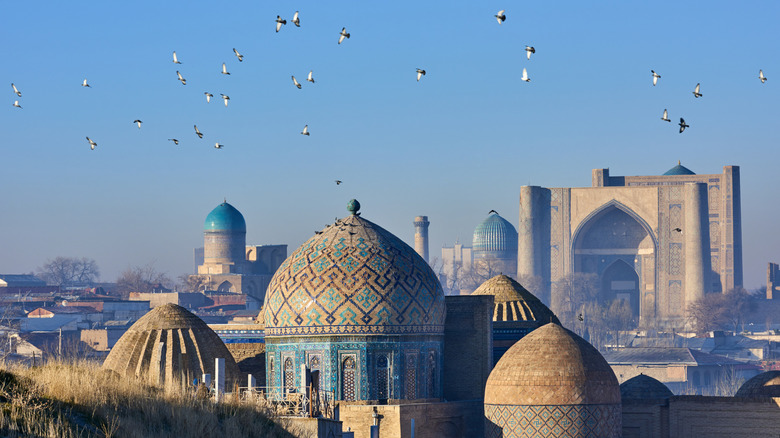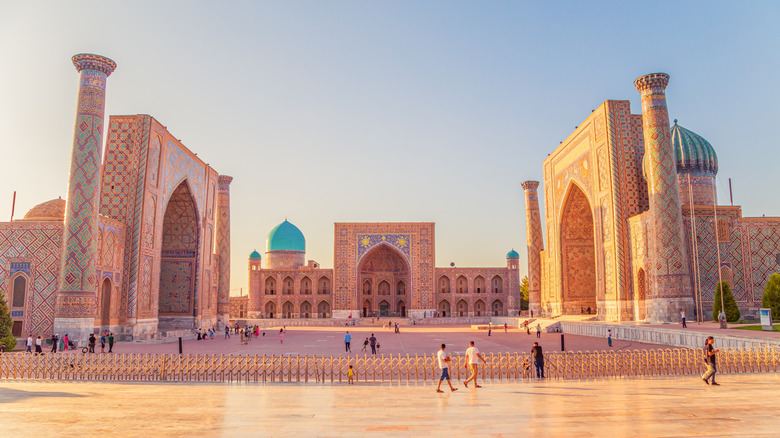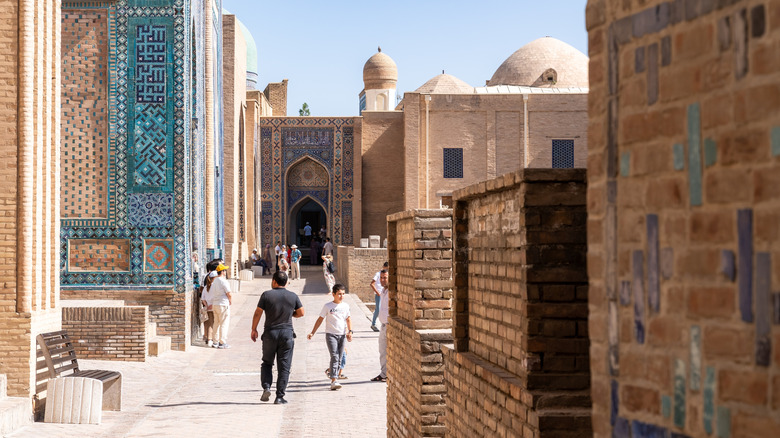Stepping through the winding alleyways of Samarkand feels like stepping back in time to an ancient age of colorful bazaars, camel caravans, and daring explorers in mysterious lands. Situated along the Zeravshan River in northeastern Uzbekistan, this magnificent city was once an important hub along the historic Silk Road trading route connecting China with Europe, and boasts glorious architecture that rivals Renaissance Italy. Prehistoric settlements discovered in the area date back to 1500 B.C., making Samarkand one of the oldest cities in the world. Samarkand’s historic center has been designated a World Heritage Site by UNESCO, due to its significance as a “crossroads of world cultures with a history of over two and a half millennia,” according to the UNESCO website.
Subject to conquest by the likes of Alexander the Great and Genghis Khan, the city was a diverse tapestry of religions and ethnicities, from Zoroastrians and Hindus, to Buddhists and Christians, along with a prominent Islamic influence. From the 14th century onwards, Samarkand began to flourish in earnest under control of the great Turkic-Mongol warlord Timur, also known as Tamerlane, the founder of the Timurid Empire. Establishing Samarkand as his new capital, the city enjoyed a status of elegance, wealth, and sophistication. The influence of Timur’s rule can be felt throughout the city, from the glittering majolica tiles adorning the madrassas and mosques built during his reign, to the emergence of traditional handicrafts, like embroidered textiles and ceramic pottery, which would become an icon of Samarkand’s artistic heritage.
Over the centuries, Samarkand’s power and influence waned, and during the 1700s, the city was practically uninhabited. But visitors to the city of Samarkand today will find a bustling metropolis echoing with the opulence of the past, where the ancient streets are alive with awe-inspiring architecture, and the bazaars bustle with shopkeepers selling their age-old wares.
Explore an intersection of ancient cultures in Samarkand
Your first stop in Samarkand should be the Registan, a vast public square once teeming with bazaars where the ancient city’s inhabitants would gather to receive royal announcements. According to a review on Tripadvisor, “This is definitely the highlight of Uzbekistan.” On three sides of the square you’ll find the city’s most prominent madrassas, or Islamic colleges, built between the 15th and 17th centuries. Fluted domes and towering pillars in blue and gold majolica tiles dominate the scene, the stunning mosaic depicting intricate patterns of stars and knot-work. The Ulugh Beg Madrassa is the oldest of the three, built in 1420 and named for Timur’s grandson. About 20 minutes away by foot is the impressive Gur-e-Amir Mausoleum, another majolica-tiled edifice with a fluted blue dome. Built in 1404, this is the final resting place of Timur, as well as his grandson, Ulugbek — upon entering, aside from the breathtaking gilded mosaic walls, you’ll be able to see the green jade stone and marble slab that marks their graves.
About a 30-minute walk from Registan Square, you’ll come to the incredibly preserved necropolis in the old town, known as Shah-i Zinda, an ancient maze of narrow streets flanked by domed mausoleums. This site contains the 7th century tomb of Qusam, a cousin of the Islamic prophet Muhammad, and most of the surrounding shrines and tombs date to the 1300s. Nearby the Shah-i Zinda is the fascinating Mausoleum of Saint Daniel. Inside a rocky hilltop fortress, a 60-foot long sarcophagus purportedly contains the remains of the Prophet Daniel of Biblical lion’s den fame. The site is popular with pilgrims of all faiths who come to enjoy the serene gardens surrounding the mausoleum, as well as the flowing natural spring of healing water nearby.




